Residue
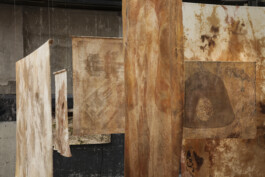
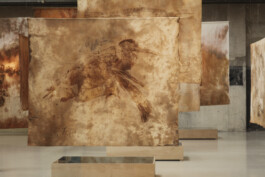
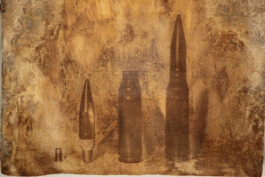
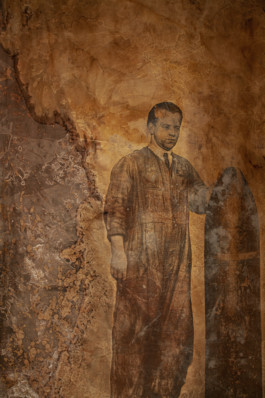
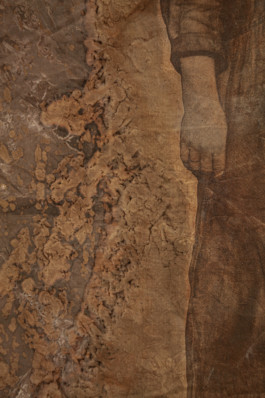
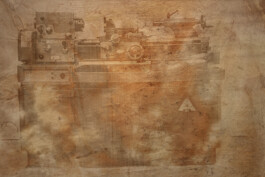
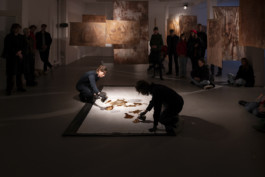
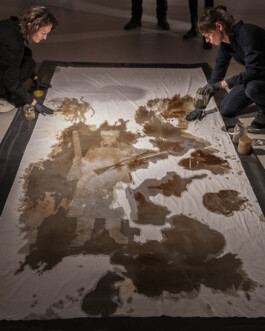
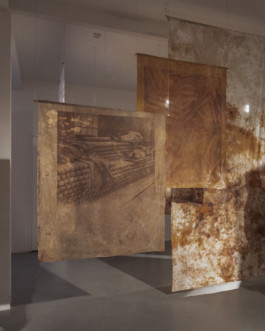
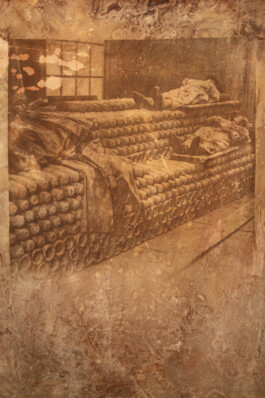
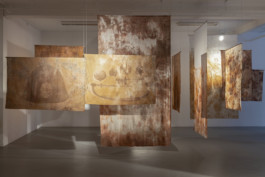
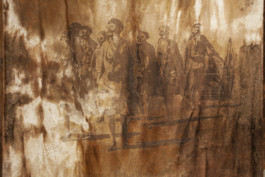
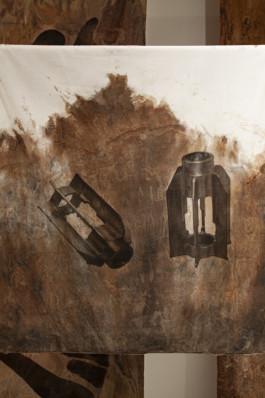
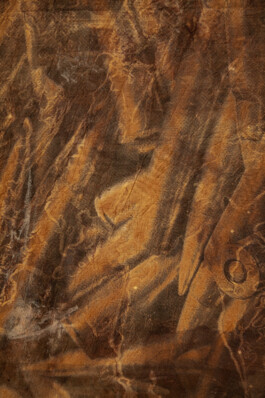
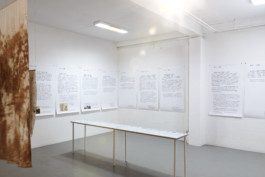
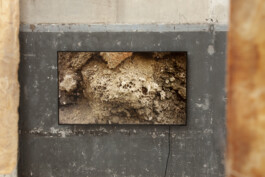
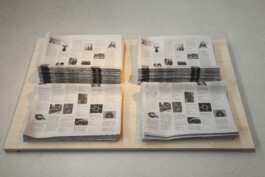
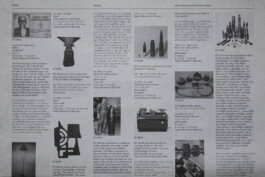
Residue is developed and executed in collaboration between Anika Schwarzlose and Elena Khurtova. The project engages with the history of the Hembrug terrain in Zaandam, which has been home to the Netherlands’ biggest weapons factory between 1904 and 2003. It played an important role in many international conflicts, including the suppression of the independence struggles in Indonesia during the colonial wars. Currently, the area is in redevelopment in order to revive it for civilian use, but the violence that used to be exported from here has not disappeared; the soils beneath the former factory contain contaminating remnants of the weapons manufacturing. An extensive process of soil remediation tries to address this contamination. An act that represents attempts of cleansing, but can just as well be read as the covering up of an uncomfortable past.
We see the soil of the Hembrug terrain as a physical archive that tells its own story. In parallel, we investigated the photographic archive of the Hembrug factory and selected images which depict working conditions, advertisements, and technical documentation. A series of large textiles brings these two archives in contact through a photochemical process, called soil chromatography. The polluted soils reveal and transform archival images, both archives interact and collide with each other.
During three exhibitions, these archives unfold step by step, allowing visitors to physically enter the history of the Hembrug terrain. At Amsterdam Museum we are showing the technical part of the soil chromatography textiles, at the former PAKT we have displayed, next to a large visual presentation of 28 textiles, historic research which was developed in collaboration with Masha Domracheva. Documents from the Zaans Museum collection, and the factory’s production history are presented in a timeline, opening up information about the Hembrug factory’s participation in geopolitical conflicts.
A third chapter was exhibited at Looiersgracht 60, in the scope of the Sonic Acts Biennial. Here the third chapter of Residue unfolded. An installation that unites three archives: the Hembrug soil, archival imagery of the factory's operations, and footage from the Dutch Film and Television Archive that depicts the impact of the Hembrug weapons with a focus on the scorched earth that is left behind by armed conflict. Unlike typical representations of weapons as aesthetic or neutral objects, Residue contextualizes them within their intended use and tangible materiality. Our project aims to give shape to invisible destruction of environments through contamination. A 4 channel video highlights the factory's history, exploring the relationship between armed conflict, military production, and their enduring impact on humanity and ecological environments.
collaboration with
Elena Khurtova
YEAR
2023 - 2024
MATERIALS
spatial installation including textiles that are printed with a custom photochemical process, soils, text, video
DIMENSIONS
variable
SUPPORTED BY:
Mondriaanfonds
Stichting Stokroos
AFK
W.E. Jansenfonds
Zaansmuseum
Beeld en Geluid, Institute for Sound and Vision









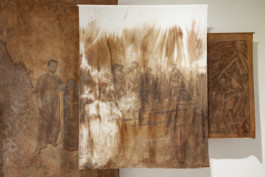





Residue


















Residue is developed and executed in collaboration between Anika Schwarzlose and Elena Khurtova. The project engages with the history of the Hembrug terrain in Zaandam, which has been home to the Netherlands’ biggest weapons factory between 1904 and 2003. It played an important role in many international conflicts, including the suppression of the independence struggles in Indonesia during the colonial wars. Currently, the area is in redevelopment in order to revive it for civilian use, but the violence that used to be exported from here has not disappeared; the soils beneath the former factory contain contaminating remnants of the weapons manufacturing. An extensive process of soil remediation tries to address this contamination. An act that represents attempts of cleansing, but can just as well be read as the covering up of an uncomfortable past.
We see the soil of the Hembrug terrain as a physical archive that tells its own story. In parallel, we investigated the photographic archive of the Hembrug factory and selected images which depict working conditions, advertisements, and technical documentation. A series of large textiles brings these two archives in contact through a photochemical process, called soil chromatography. The polluted soils reveal and transform archival images, both archives interact and collide with each other.
During three exhibitions, these archives unfold step by step, allowing visitors to physically enter the history of the Hembrug terrain. At Amsterdam Museum we are showing the technical part of the soil chromatography textiles, at the former PAKT we have displayed, next to a large visual presentation of 28 textiles, historic research which was developed in collaboration with Masha Domracheva. Documents from the Zaans Museum collection, and the factory’s production history are presented in a timeline, opening up information about the Hembrug factory’s participation in geopolitical conflicts.
A third chapter was exhibited at Looiersgracht 60, in the scope of the Sonic Acts Biennial. Here the third chapter of Residue unfolded. An installation that unites three archives: the Hembrug soil, archival imagery of the factory's operations, and footage from the Dutch Film and Television Archive that depicts the impact of the Hembrug weapons with a focus on the scorched earth that is left behind by armed conflict. Unlike typical representations of weapons as aesthetic or neutral objects, Residue contextualizes them within their intended use and tangible materiality. Our project aims to give shape to invisible destruction of environments through contamination. A 4 channel video highlights the factory's history, exploring the relationship between armed conflict, military production, and their enduring impact on humanity and ecological environments.
collaboration with
Elena Khurtova
YEAR
2023 - 2024
MATERIALS
spatial installation including textiles that are printed with a custom photochemical process, soils, text, video
DIMENSIONS
variable
SUPPORTED BY:
Mondriaanfonds
Stichting Stokroos
AFK
W.E. Jansenfonds
Zaansmuseum
Beeld en Geluid, Institute for Sound and Vision














